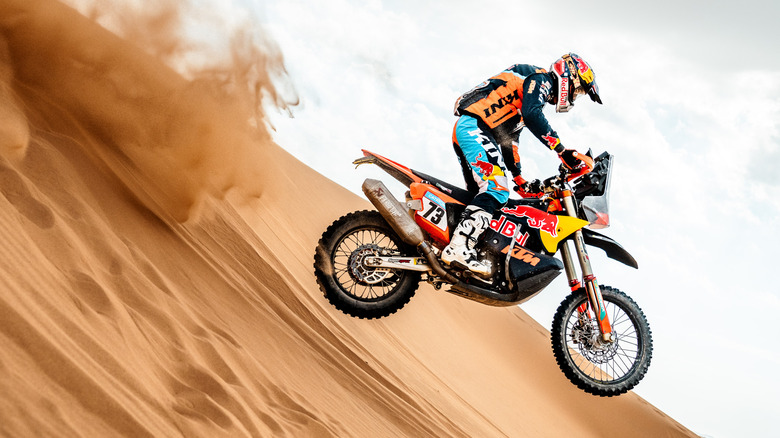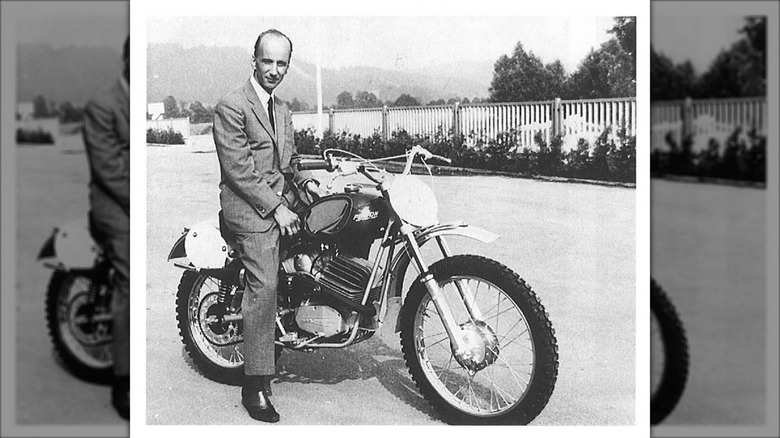KTM Motorcycles: What Does The Name Stand For, And How Did The Company Start?
You've probably seen a KTM zipping down the road in its signature bright orange livery. For those new to the world of motorcycling, KTM is an Austrian motorcycle manufacturer renowned for its high-performance bikes and aggressive styling. The company produces a wide range of motorcycles for both street and motorsport use, including sports, naked, superbikes, and dirt models. KTM has a strong presence in the racing world with 96 world titles in Motocross (MXGP, MX1, and MX2), a record 18 consecutive wins between 2001 and 2019 in the Dakar rally, totaling 19 overall victories and 7 MotoGP race victories.
Given this legacy, its no surprise that KTM is also considered one of the top brands for dirt bikes. Among KTM's street bikes, the naked Duke and Adventure lineup are considered some of its best offerings. But have you ever wondered what "KTM" actually stands for? The bold lettering is adorned across every KTM motorcycle, often paired with the brand's iconic black, orange, and white color scheme. So, what's the meaning behind the name?
KTM Sportmotorcycle AG is the full official name of the parent company that now owns all KTM subsidiaries. Still, the letters have represented different names throughout KTM's early history. The first of these was "Kraftfahrzeuge Trunkenpolz Mattighofen." Kraftfahrzeuge stands for "Motor vehicle," Trunkenpolz was the owner's last name, and "Mattighofen" is where the workshop was established. To understand why the name changed, we must go back to take a peek at KTM's history.
The evolution of KTM motorcycles
Before World War II, Johann "Hans" Trunkenpolz ran the largest workshop in Mattighofen, Austria, established in 1934. There, he repaired cars and also sold DKW motorcycles and Opel cars. However, during World War II, the workshop primarily serviced and repaired military vehicles. After the war, there was no need to service military cars on such a massive scale, so he shifted back to working on passenger vehicles. However, this proved to be a less sustainable business, especially when Austria was struggling to rebuild its economy.
Looking for a more economical alternative, Hans turned to motorcycles. In 1951, just six years after the war ended, he unveiled his first motorcycle — the R100 — marking the beginning of KTM's legacy. In 1953, Ernst Kronreif became a major stakeholder in the company, and KTM's initial abbreviation became Kronreif & Trunkenpolz Mattighofen. As its popularity grew, the English-speaking crowd had difficulty pronouncing it and resorted to simply calling it "KTM." In 1980, the company's name was changed to KTM Motor-Fahrzeugbau KG.
In 2025, Bajaj, the Indian two-wheeler manufacturer, increased its stake in KTM to a controlling 75% (up from its earlier 49% stake), helping to ease the Austrian brand's financial turmoil. Despite the change in ownership, KTM retains its name of KTM Sportmotorcycle AG; a title adopted in 1994 when it was renamed from KTM Sportmotorcycle GmbH.

